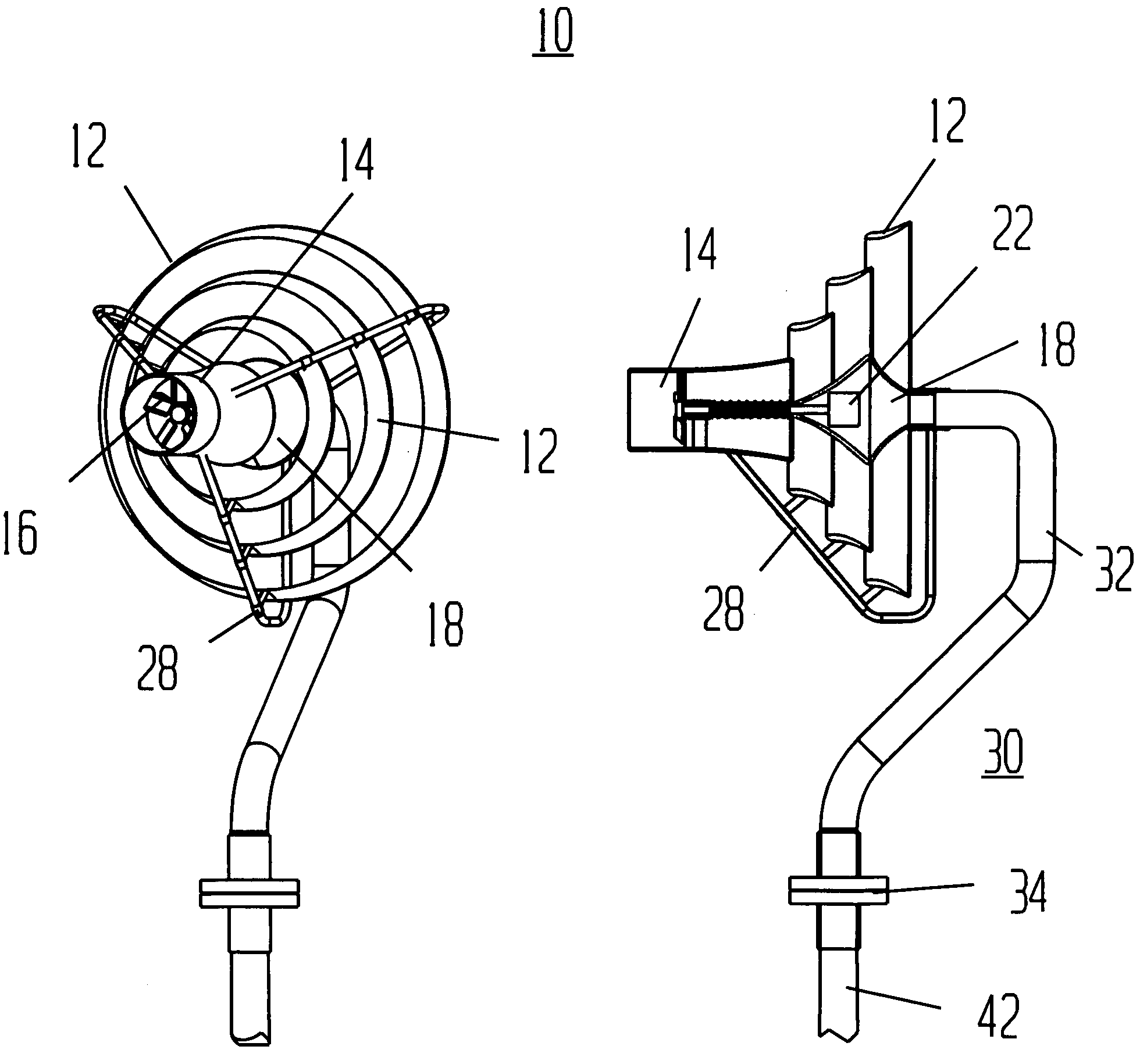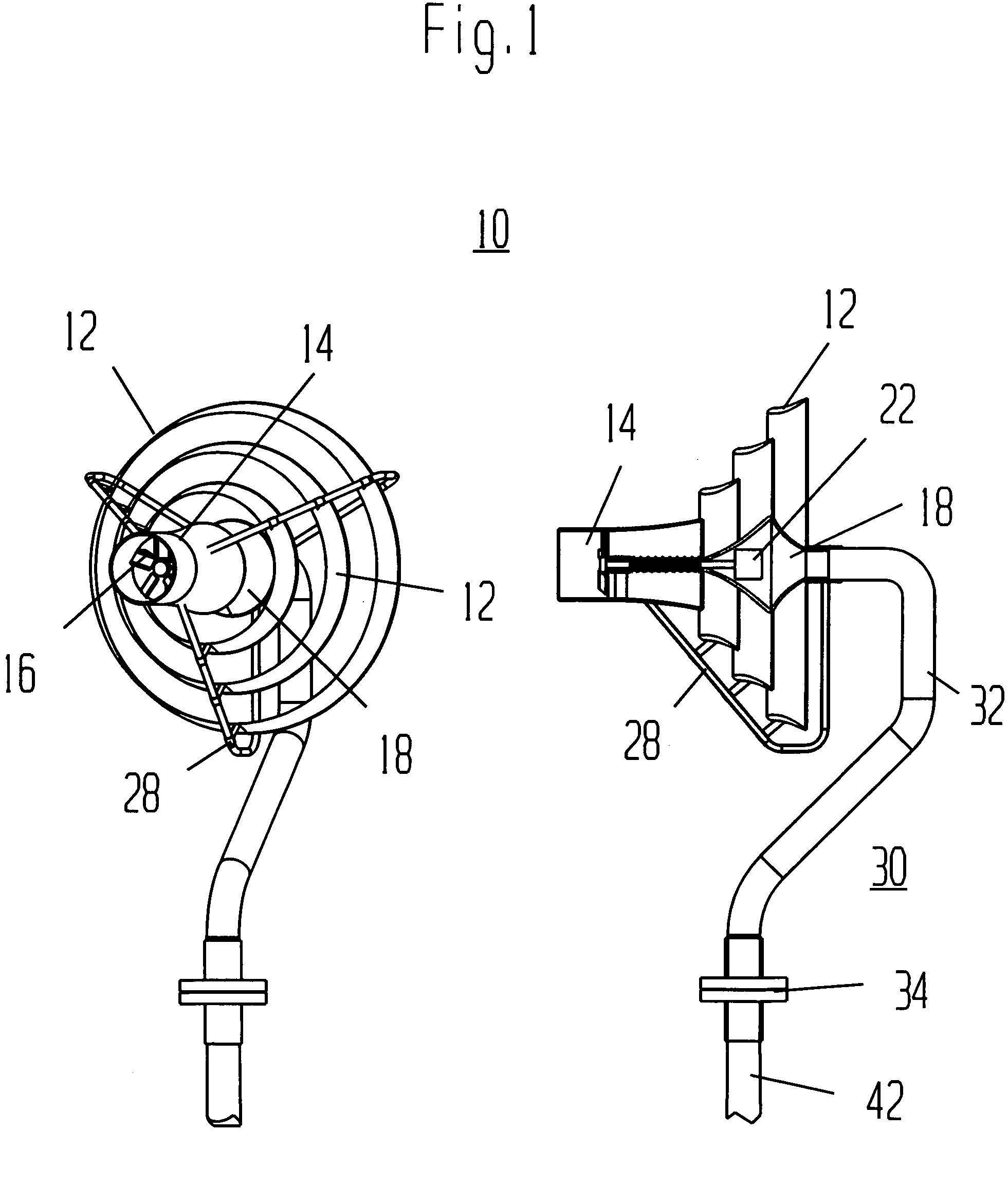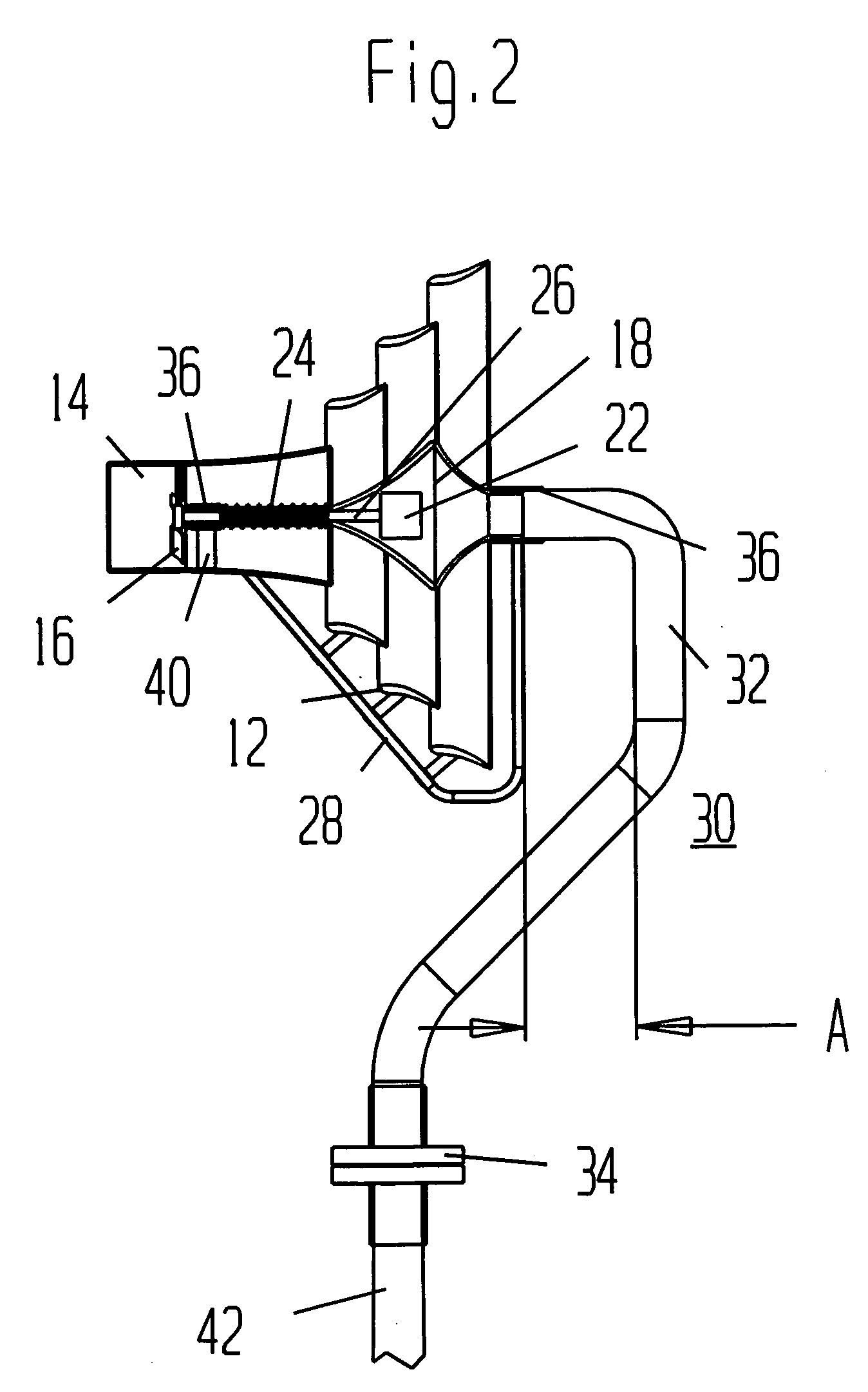Habitat friendly, multiple impellor, wind energy extraction
a technology of wind energy and habitat, applied in the direction of wind energy generation, motors, sustainable buildings, etc., can solve the problems of difficult to obtain bird mortality statistics, visual and noise pollution, serious environmental hazards, etc., to save wildlife and people, clutter large tracts of rural land, and reduce vibration
- Summary
- Abstract
- Description
- Claims
- Application Information
AI Technical Summary
Benefits of technology
Problems solved by technology
Method used
Image
Examples
Embodiment Construction
[0041] The description of invention 10 as presented in FIG. 1 must begin with a description of how shrouded wind turbines having one or more concentrator wings 12 operate. FIG. 6 therefore illustrates schematically, a cross section of the flow of wind through turbine shroud 14 and through three additional shrouds or concentrator wings 12. Turbine shroud 14 serves to enclose impellor 16 which in turn serves to react with the wind flowing through turbine shroud 14 and drive power converter 22, not shown in this illustration, such as an alternator or generator. Concentrator wings 12 operate fundamentally the same as aircraft wings and have similar profiles as may be readily seen from FIG. 6. These profiles generally have a top convex shaped surface to accelerate the flow of wind, and a lower flattened or concaved surface that tends to slightly decelerate the flow of wind past these surfaces. The profiles of concentrator wings 12 as illustrated are inclined, or have, in aeronautical ter...
PUM
 Login to View More
Login to View More Abstract
Description
Claims
Application Information
 Login to View More
Login to View More - R&D
- Intellectual Property
- Life Sciences
- Materials
- Tech Scout
- Unparalleled Data Quality
- Higher Quality Content
- 60% Fewer Hallucinations
Browse by: Latest US Patents, China's latest patents, Technical Efficacy Thesaurus, Application Domain, Technology Topic, Popular Technical Reports.
© 2025 PatSnap. All rights reserved.Legal|Privacy policy|Modern Slavery Act Transparency Statement|Sitemap|About US| Contact US: help@patsnap.com



